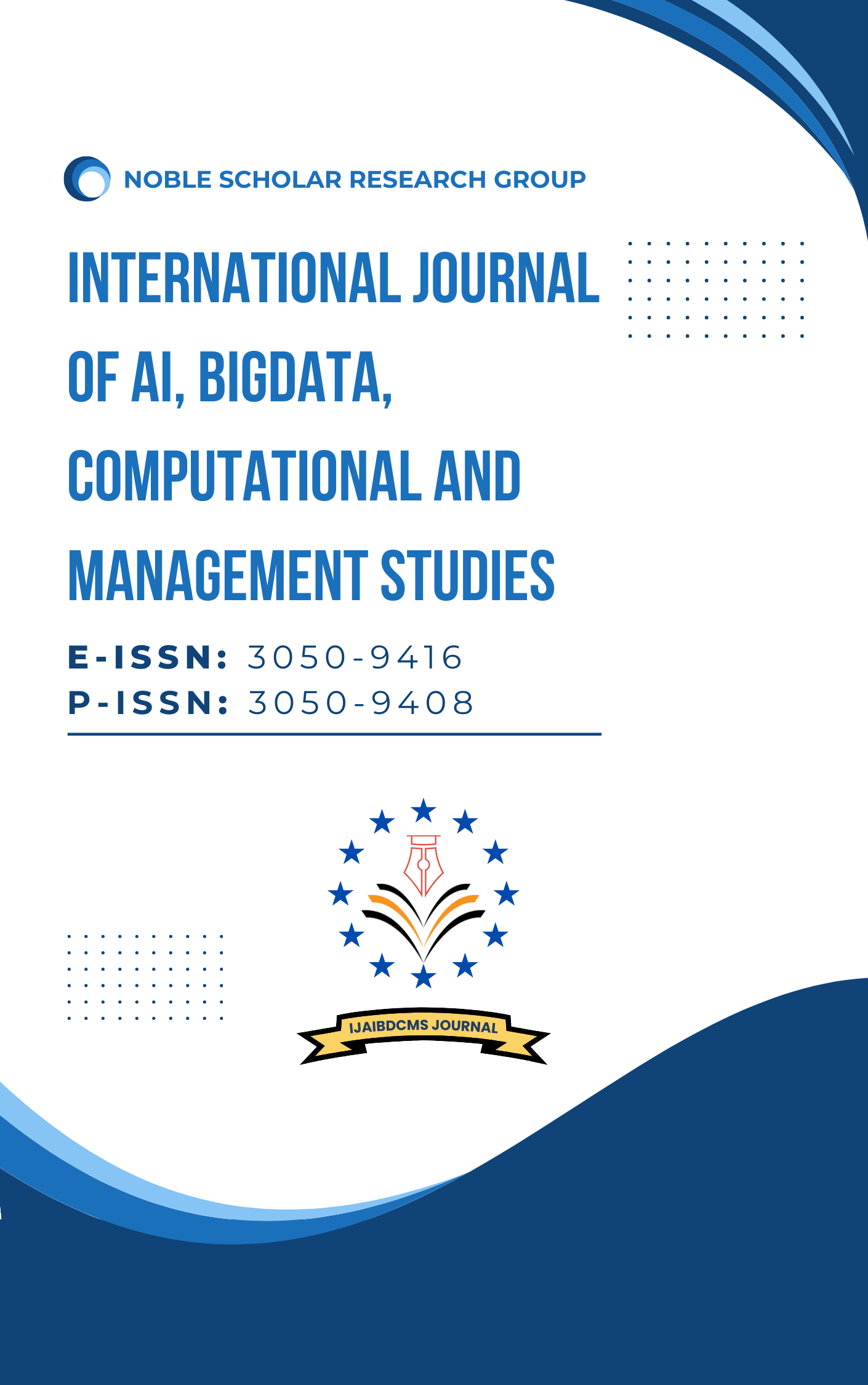Tokenized Investment Funds and the Future of Asset Management: Challenges in Governance, Custody, and Compliance
DOI:
https://doi.org/10.63282/3050-9416.IJAIBDCMS-V5I3P111Keywords:
Tokenized Investment Funds, Blockchain, Asset Management, Governance, Digital Custody, Smart Contracts, Central Bank Digital Currencies (CBDCs)Abstract
Tokenized investment funds are a breakthrough in asset management, using blockchain to transform owning funds and simplify investments. Traditional funds that create digital tokens allow investors to trade more easily, hold a smaller number of shares and be more transparent, which helps people from all walks of life access more types of investments. Nonetheless, adding tokenization to blockchain technology creates major obstacles, especially in terms of governance, custody, and following regulations. It is important for governance models to stay flexible while connecting on-chain systems to rules made outside the blockchain, as fund managers must meet their changing fiduciary duties in decentralized settings. The need for safe and effective tools to control digital assets is very high, so key managers need to be qualified and use solid key practices. Several parts of the regulatory process are unclear and still divided, causing more challenges for KYC, AML rules and global operations. Despite the issues, tokenized funds provide several clear advantages, including saving costs, simplifying operations, and letting organizers create innovative ways to set up these funds. In this paper, we review many different aspects of tokenized investment funds and look at the present-day obstacles to their adoption and the directions in which they may evolve. It demonstrates why new standards, technologies and unified regulatory systems are required for the ecosystem to be secure and effective. As digital changes affect asset management, tokenized investment funds are set to transform the industry by making investments more open, transparent and reliable
References
1. Wandmacher, R. (2022). Tokenization Disrupts ETFs. In Cryptofinance: A New Currency for a New Economy (pp. 87-103).
2. Mohamed, H. (2022). Decentralizing Finance: Cryptocurrencies, ICOs, STOs and Tokenization of Assets. In Blockchain Technology (pp. 221-234). CRC Press.
3. Donoghue, S. (2024). Custody in the age of digital assets: The path to building market infrastructure fit for a tokenised economy. Journal of Securities Operations & Custody, 16(2), 168-179.
4. Silva, R., Marques, R. P., & Inácio, H. (2024). A design for tokenization in governmental investment. International Journal of Accounting & Information Management, 32(1), 19-39.
5. Barbereau, T., Sedlmeir, J., Smethurst, R., Fridgen, G., & Rieger, A. (2022). Tokenization and regulatory compliance for art and collectables markets: from regulators’ demands for transparency to investors’ demands for privacy. In Blockchains and the token economy: theory and practice (pp. 213-236). Cham: Springer International Publishing.
6. Zhitomirskiy, E., Schmid, S., & Walther, M. (2023). Tokenizing assets with dividend payouts a legally compliant and flexible design. Digital Finance, 5(3), 563-580.
7. Lloyd, T., O'Broin, D., & Harrigan, M. (2024, August). The On-Chain and Off-Chain Mechanisms of DAO-to-DAO Voting. In 2024 IEEE International Conference on Blockchain (Blockchain) (pp. 649-655). IEEE.
8. Ciriello, R. F. (2021). Tokenized index funds: A blockchain-based concept and a multidisciplinary research framework. International Journal of Information Management, 61, 102400.
9. Baum, A. (2021). Tokenization The future of real estate investment. The Journal of Portfolio Management, 47(10), 41-61.
10. Kaladevi, A. C., Valavan, L., Rajendran, S., & Perumal, R. (2025). Tokenization and its applications. In Human-Centric Integration of Next-Generation Data Science and Blockchain Technology (pp. 147-164). Academic Press.
11. Chohan, U. W. (2024). The decentralized autonomous organization and governance issues. In Decentralized Autonomous Organizations (pp. 139-149). Routledge.
12. Ding, W., Liang, X., Hou, J., Li, J., Rouabah, Y., Yuan, Y., & Wang, F. Y. (2022). A novel approach for predictable governance of decentralized autonomous organizations based on parallel intelligence. IEEE Transactions on Systems, Man, and Cybernetics: Systems, 53(5), 3092-3103.
13. Tokenised funds series Paper 1 - What, why and how, The Investment Association, online. https://www.theia.org/sites/default/files/2020-11/Tokenised%20funds%201%20-%20What%20why%20how.pdf
14. Parry, C. (2024). Digital asset custody deciphered: A primer to navigating the challenges of safeguarding digital assets. Journal of Securities Operations & Custody, 16(2), 106-117.
15. Lavayssière, X. (2023). Tokenization of Financial Assets. Available at SSRN 4649162.
16. Anderson, C. (2017). Delivery of Goods in the Custody of a Third Party: the Role of the Custodier. Edinburgh Law Review, 21(2), 143-168.
17. Haber, E., & Zarsky, T. (2016). Cybersecurity for infrastructure: a critical analysis. Fla. St. UL Rev., 44, 515.
18. Sak, M. H. (2024). KYC/AML Technologies in Decentralized Finance (DeFi).
19. D'Onfro, D. (2020). Smart contracts and the illusion of automated enforcement. Wash. UJL & Pol'y, 61, 173.
20. Davydov, V., & Khalilova, M. (2019, March). The business model of creating a digital platform for tokenization of assets on financial markets. In IOP Conference Series: Materials Science and Engineering (Vol. 497, No. 1, p. 012069). IOP Publishing.



